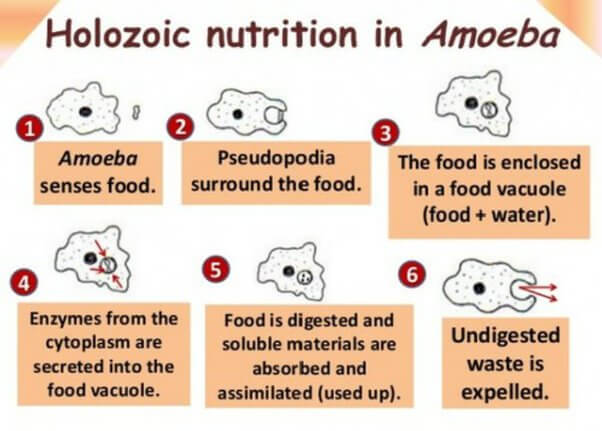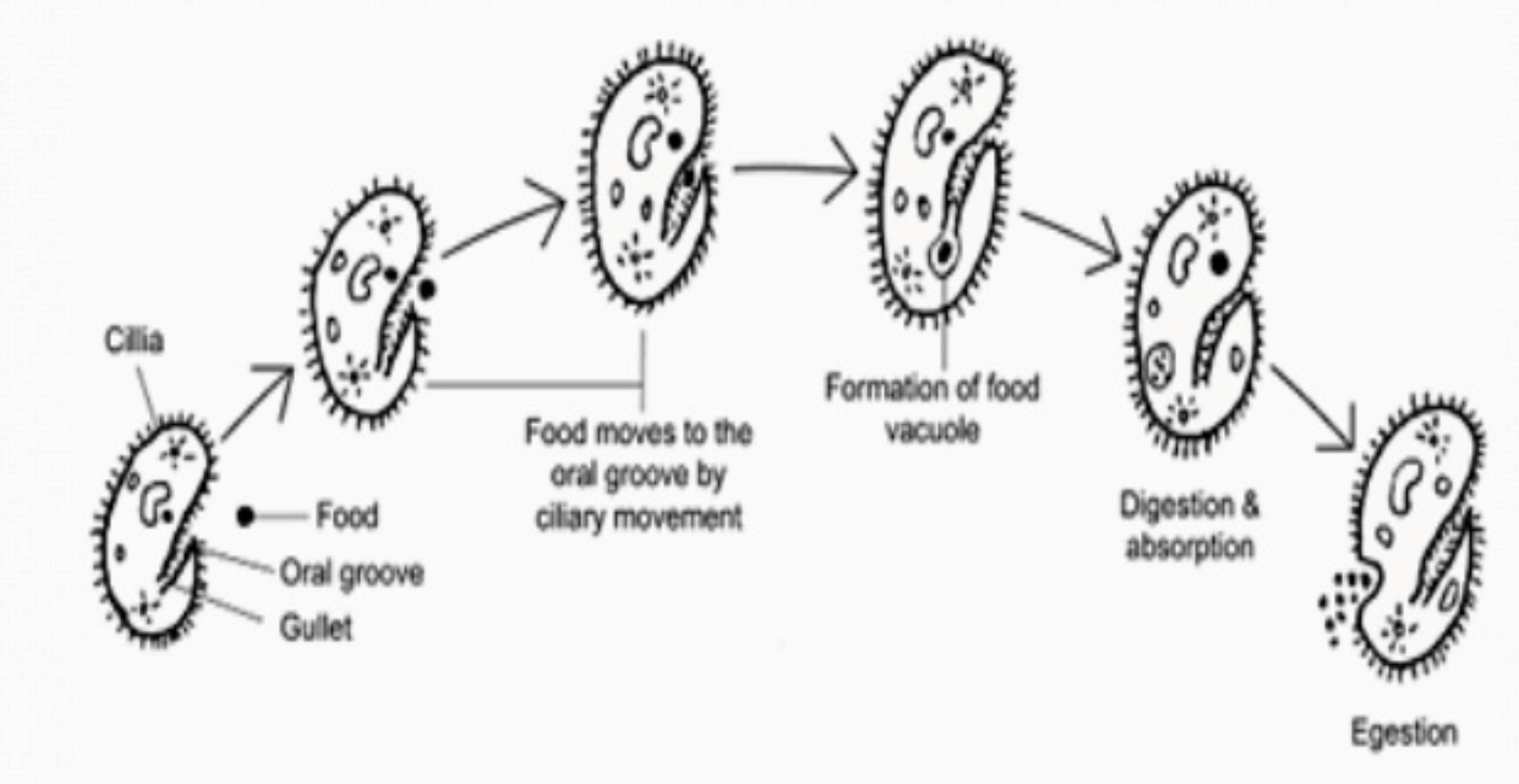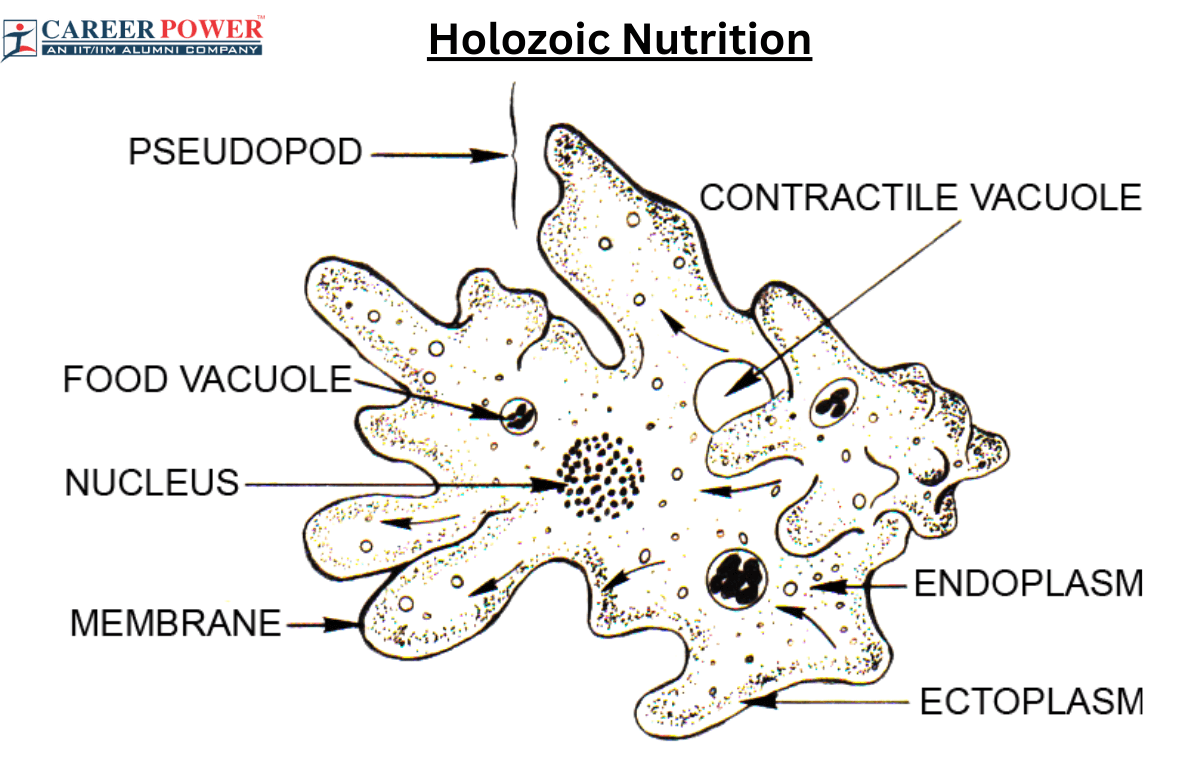Nutrition refers to the process of obtaining and consuming the necessary nutrients for the body’s growth, maintenance, and overall well-being. These nutrients include carbohydrates, proteins, fats, vitamins, and minerals. We also know that nutrition includes two modes: Autotrophic mode and Heterotrophic mode of nutrition, and the heterotrophic mode of nutrition is also of three types: Holozoic, Parasitic, and Symbiotic nutrition. All these topics are included in the CBSE Class 10th Science Syllabus. Here we have discussed Holozoic nutrition briefly in our article.
What is Holozoic Nutrition?
The word holozoic is made from two words- holo means whole and zoikos means animals and literally means animals which eat their food whole. Holozoic nutrition is a type of nutrition in which organisms ingest solid or liquid food particles and then digest them internally to obtain nutrients. This process involves ingestion, digestion, absorption, assimilation, and egestion of nutrients to support the organism’s growth and energy needs.
Humans and many other animals such as cows, tigers, deer, cats, dogs, frogs, fishes, amoeba, and paramecium exhibit Holozoic nutrition. Holozoic nutrition is characteristic of almost all living organisms and is very essential for their survival and the proper functioning of the body.
Step-Wise Process of Holozoic Nutrition
Holozoic nutrition refers to the process by which organisms consume solid food and digest it internally. The steps involved in holozoic nutrition typically include:
Step 1: Ingestion-
Animals consume solid food through methods like biting, swallowing, or engulfing.
Step 2: Digestion-
Once ingested, the food is broken down into simpler components through mechanical and chemical processes. Mechanical digestion involves physical actions like chewing, while chemical involves enzymes that break down complex molecules into smaller ones.
Step 3: Absorption-
After digestion, the smaller nutrients such as amino acids, sugars, and fatty acids are absorbed into the walls of the digestive system.
Step 4: Assimilation-
The absorbed nutrients are transported to cells throughout the body, where they are utilized for energy production, growth, repair, and other essential functions.
Step 5: Egestion-
Any undigested or unabsorbed remains, along with waste products, are eliminated from the body through excretion.
Holozoic Nutrition in Humans
Holozoic nutrition is a way of feeding where living things eat solid food and digest it inside their bodies. In humans, this process starts when we eat food, which is then broken down by chewing and stomach juices. The digestive system helps in this, which includes the mouth, stomach, small intestine, and large intestine. These organs work together to break the food into simpler parts. The body absorbs useful nutrients from the food and uses them for energy and growth. Anything the body doesn’t need is removed as waste.
Holozoic Nutrition in Animals
We know that holozoic nutrition is also observed in animals where they ingest complex organic matter (such as other organisms or food) and then digest it internally through various processes like mechanical breakdown, enzymatic action, and absorption. This allows animals to obtain the necessary nutrients for their survival and growth. Examples of animals that exhibit holozoic nutrition are dogs, cats, tigers, cows, deer, etc.
Holozoic Nutrition in Amoeba
As we already discussed holozoic nutrition, is a type of nutrition where an organism ingests solid food particles to extract nutrients. In the case of an amoeba, it engulfs food particles, usually small organisms like bacteria or algae, through a process called Phagocytosis. The amoeba surrounds the food particles with its cell membrane, forming a food vacuole. Enzymes are then released into the vacuole to digest the food, breaking it down into simpler molecules. The nutrients are absorbed into the amoeba’s cytoplasm, while indigestible remains are expelled. This process allows amoeba to obtain energy and nutrients from its environment.

Holozoic Nutrition in Paramecium
Holozoic nutrition is also observed in paramecium, a single-celled organism. Paramecium feeds on smaller microorganisms like bacteria and algae. The paramecium uses hair-like structures called cilia to create current in the water, which helps sweep food particles towards its oral groove. The oral groove leads to a funnel-like structure called the Gullet, where the food is engulfed. This process is called endocytosis.
Once inside the gullet, the food particle is surrounded by a membrane and forms a food vacuole. Enzymes are released into the food vacuole to digest the ingested food. As digestion occurs, the nutrients are absorbed into the cytoplasm of the paramecium, providing it with energy. The remaining undigested waste is eventually expelled from the cell through an opening called the Anal Pore.
In summary, in paramecium, holozoic nutrition involves using cilia to direct food particles into the oral groove, engulfing them through endocytosis, digesting the food in food vacuoles, and absorbing nutrients while eliminating waste.




 50 Vegetables Name for Kids in English a...
50 Vegetables Name for Kids in English a...
 Food Chain: Definition, Types, Examples,...
Food Chain: Definition, Types, Examples,...
 Human Respiratory System: Definition, Di...
Human Respiratory System: Definition, Di...













